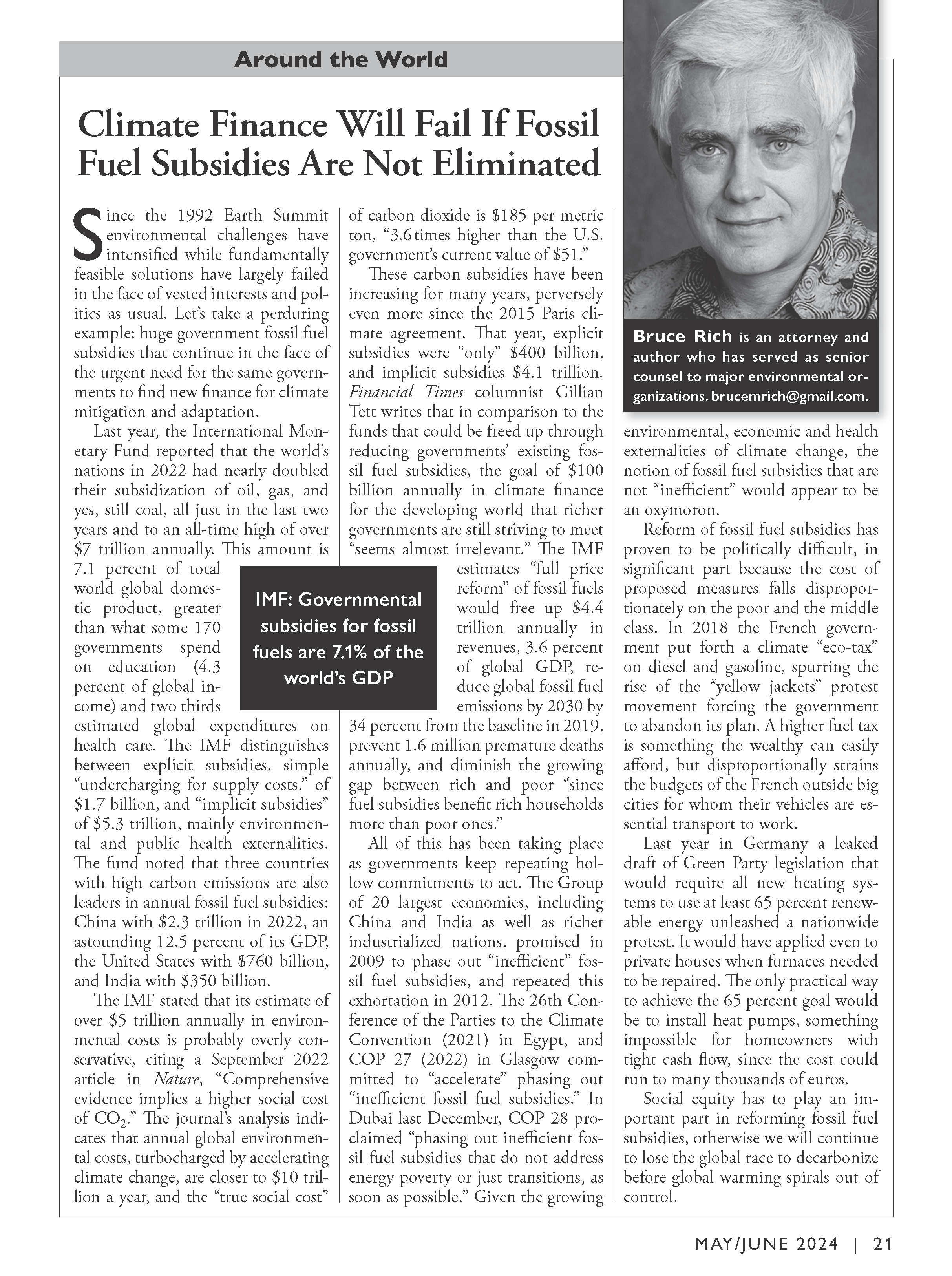- Bruce Rich
- Environmental Forum
- May/June 2024
- 21
Since the 1992 U.N. Rio Earth Summit environmental challenges have intensified while fundamentally feasible solutions have largely failed in the face of vested interests and politics. Let’s take a perduring example: huge government fossil fuel subsidies that continue in the face of the urgent need for the same governments to find new finance for climate mitigation and adaptation.
Last year the International Monetary Fund reported that the world’s nations in 2022 had nearly doubled since 2020 their subsidization of oil, gas, and yes, still coal, to an all-time high of over $7 trillion annually. This amount is 7.1 percent of total world global domestic product, greater than what some 170 governments spend on education (4.3 percent of global income) and two-thirds estimated global expenditures on health care. The IMF distinguishes between explicit subsidies, simple “undercharging for supply costs,” of $1.7 billion, and “implicit subsidies” of $5.3 trillion, mainly environmental and public health externalities. The Fund noted that three countries with high carbon emissions are also leaders in annual fossil fuel subsidies: China with $2.3 trillion in 2022, an astounding 12.5 percent of its GDP, the U.S. with $760 billion, and India with $350 billion.
The IMF stated that its estimate of over $5 trillion annually in environmental costs is probably overly conservative, citing a September 2022 article in Nature, “Comprehensive evidence implies a higher social cost of CO2.” The Nature analysis indicates that annual global environmental costs turbo-charged by accelerating climate change are closer to $10 trillion a year, and the “true social cost” of carbon dioxide is $185 per metric ton, “a value 3.6 times higher than the US government’s current value of $51.”



